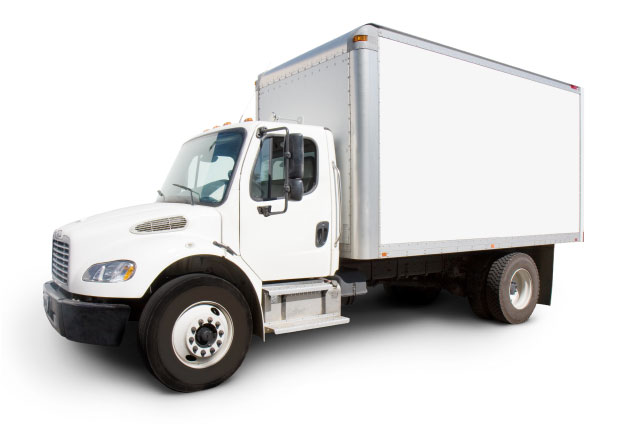Tips for Storing a Freezer When Not in Use
Posted on 11/06/2025
Tips for Storing a Freezer When Not in Use
Whether you're moving, remodeling, or just need to temporarily retire your appliance, knowing how to store a freezer when not in use is crucial to ensure its longevity and top performance. Proper storage methods can prevent mold, bad odors, and mechanical issues when your freezer is idle for an extended period. In this comprehensive guide, you'll learn the best practices, expert advice, and answers to common questions on storing a freezer safely and efficiently.
Why Proper Freezer Storage Matters
Many homeowners underestimate the importance of correct storage. Improperly storing a freezer can lead to issues such as rust, foul smells, pest infestation, and even destruction of internal components. Knowing the right steps will protect your investment and save you money and hassle in the long run. Below, we share a step-by-step approach to storing a freezer when it's not being used.

Preparing Your Freezer for Storage
Before you can safely store your freezer away, a few essential steps are needed. This will ensure your unit remains clean, dry, and ready for future use without any surprises.
1. Unplug the Freezer
The very first step in freezer storage is to disconnect the appliance from the power source. Not only is this critical for safety, but it also allows the freezer to start defrosting--an important procedure before storage.
2. Empty the Freezer
Remove all food items, drawers, and shelves. Check every corner for overlooked items which could rot and cause bad odors.
- Safely dispose of expired or perishable products.
- Store salvageable items in another functioning freezer.
- Remove any trays, racks, and ice bins, if applicable, for separate cleaning.
3. Defrost the Freezer Properly
Defrosting removes built-up ice and prevents water damage or mold growth during storage. Here's how to do it:
- Leave the freezer door open after unplugging.
- Allow ice to melt naturally or expedite with bowls of hot water placed inside.
- Wipe away water as it collects in the compartment.
Tip: Place towels around the base to absorb runoff and prevent damage to your flooring.
Cleaning Before Storage
Cleaning is a vital stage in preparing a freezer for storage. This step removes spills, food residue, and eliminates bacteria.
1. Wash the Interior and Accessories
Use a gentle cleaner such as a mix of water and baking soda. Avoid harsh chemicals that can leave a residue or break down internal plastics. Wipe all surfaces, seals, and detachable accessories.
2. Clean and Dry Gaskets
The gasket (rubber seal) around the door is a common place for mold and debris to build up. Thoroughly clean and dry the gasket to maintain optimal sealing when you use the freezer again.
3. Ensure Everything is Completely Dry
Moisture is the enemy when storing a freezer for any extended period. Use paper towels or a dry cloth to remove residual dampness in crevices and corners.
Best Placement for Storing a Freezer When Not in Use
After cleaning, you must select an appropriate location for your freezer when out of commission. The right spot keeps your freezer safe from rust, pests, and accidental damage.
1. Store in a Dry, Ventilated Area
Moisture-rich and humid environments will cause rust and promote mold growth. Choose a well-ventilated space with low humidity, such as a garage, basement (if dry), storage room, or shed.
2. Keep It Off Direct Ground Contact
Place the freezer on pallets, wood blocks, or a thick mat. This prevents contact with potentially damp floors and allows airflow beneath the unit, further reducing moisture risks.
3. Avoid Direct Sunlight & Extreme Temperatures
Continuous exposure to sunlight can damage the exterior finish and breakdown rubber components. Similarly, extreme heat or freezing cold may harm wiring, coils, and the compressor. Store your freezer in a temperature-stable area whenever possible.
How to Store a Chest Freezer vs. Upright Freezer
There are some differences in storage techniques for chest freezers compared to upright freezers.
- Chest Freezers: Store with the lid slightly ajar to encourage airflow and prevent musty smells. Use a rolled-up towel or spacer.
- Upright Freezers: Secure the door so it can't close completely, yet cannot swing fully open. Use duct tape or a bungee cord as a temporary measure.
Never store either type on its side or back, as this can allow oil to flow into the refrigerant lines and cause compressor issues.
Keeping Odors at Bay During Storage
Preventing unpleasant odors is a common concern when you store a freezer that's not in use. Here are proven tips:
- Ensure the interior is completely dry before closing and storing.
- Place an open box of baking soda, activated charcoal, or fresh coffee grounds inside, which naturally absorb odors.
- Recheck periodically if stored for more than a few months.
Electrical and Mechanical Considerations
Reliable operation after storage requires attention to electrical parts and moving components.
1. Secure the Power Cord
Coil and attach the power cord safely to the back of the freezer. Prevents tripping hazards and keeps the cable protected.
2. Transportation Safety
If you must move the freezer to a storage facility, keep it upright during transport and storage. Avoid stacking heavy items on top, as this can dent panels and damage internal parts.
Maintenance Tips During Storage
For freezers stored over long periods, a little periodic maintenance ensures they remain in top working condition:
- Inspect for Leaks: Regularly check around and inside the unit for any signs of moisture.
- Ventilation: Ensure the storage location remains dry and has good airflow.
- Pest Control: Check for any signs of rodents or insects, and take steps as needed.
- Smell Test: Open the door periodically to let air circulate and check for developing odors.
Readying Your Freezer for Use After Storage
When it's time to bring your appliance back into service, the following steps ensure it's safe and effective:
- Inspect all components for dust, cobwebs, or pests.
- Wipe down and dry the inside, especially if it has been stored for a long time.
- Plug in and allow to cool for several hours before adding food.
- Check the door seals and gaskets for cracks or mildew.
Frequently Asked Questions About Freezer Storage
Q: How long can I leave my freezer unplugged?
You can safely store a freezer unplugged for months or even years, provided all precautions in this guide are followed. The key is ensuring it is dry, clean, and aired throughout storage.
Q: Should I cover my freezer when storing it?
A breathable cotton sheet or appliance cover is best, as it keeps dust off but allows moisture to escape. Avoid plastic covers, which trap condensation and encourage mold.
Q: Is it safe to store a freezer upright?
Always store your freezer in its normal upright position. Storing on its side or back can damage the compressor and shorten the appliance's lifespan.
Q: Can I store a freezer in an unheated garage or shed?
While possible, be mindful of extreme temperatures. Prefer a location above freezing and below 100?F (38?C) for best results.
Q: How can I prevent mold while storing my freezer?
Mold is prevented by making sure the unit is perfectly clean and dry before storage. Also, keep the door ajar to allow airflow and use moisture absorbers like baking soda or silica packs.

Summary: Best Practices for Storing Your Freezer When Not in Use
- Always unplug and completely empty the freezer before storage.
- Clean and thoroughly dry the interior, shelves, and door seals.
- Defrost the unit well ahead of storage to prevent moisture buildup.
- Store in a dry, ventilated, temperature-stable place, elevated off the ground.
- Use odor absorbers and leave the door ajar to prevent smells and mold.
- Cover with breathable fabric, not plastic, to keep dust out.
- Check periodically for leaks, pests, and odors during storage.
- Always store the freezer upright and avoid stacking items on top.
By following these tips for storing a freezer when not in use, you'll prolong the life of your appliance, avoid expensive repairs, and make sure it's ready for action when you need it again!





